Charming and full of character, Prague has weathered many rulers and ages to maintain a firm spot as one of those must-see cities on everyone’s list…including mine. History leaps out at you as stroll the old town alleyways, the eclectic architecture displaying constant contrasts between beautiful and brutal.
Visiting in February allowed us to find a great hotel within naked streaking distance of the Old Town Square and Tyn Church. If you’re visiting, we’d certainly recommend Central Hotel for its close but quiet location, good breakfasts and decent sized, clean rooms. It’s also close to the cosy and cute Café No. 3 where we stopped for a couple of nightcaps after long days of walking.
It’s very easy to spend all day wandering the streets and alleys, admiring grand architecture from several style periods including a personal favourite – art nouveau. I had to study up on local hero Alphonse Mucha and his contemporaries for design college art theory assignments. Decorative architecture brings the streetscapes alive with flourishes and murals, bright facades topped by red tile roofs and curves curling around door frames soften the blow of neighbouring brutalist style buildings, echoes of the communist era.

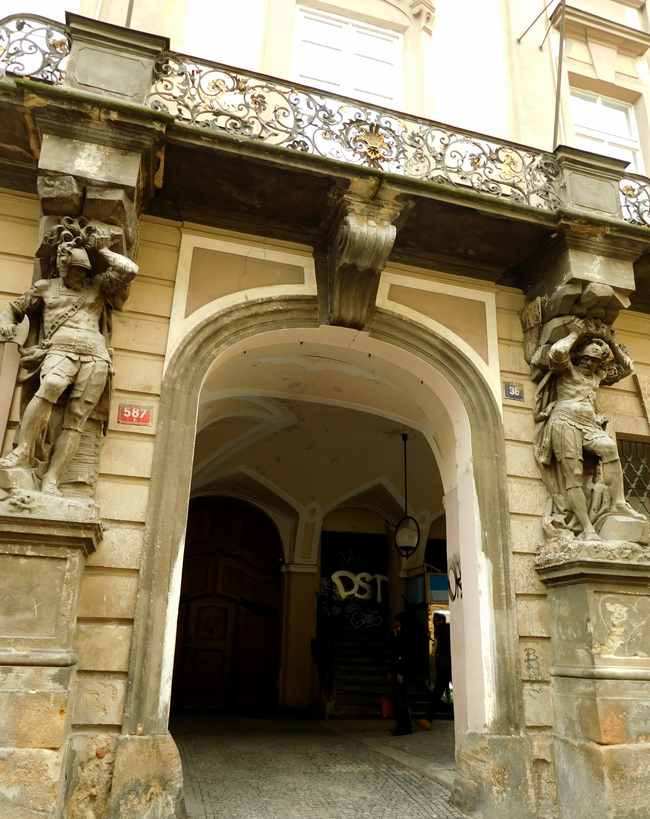
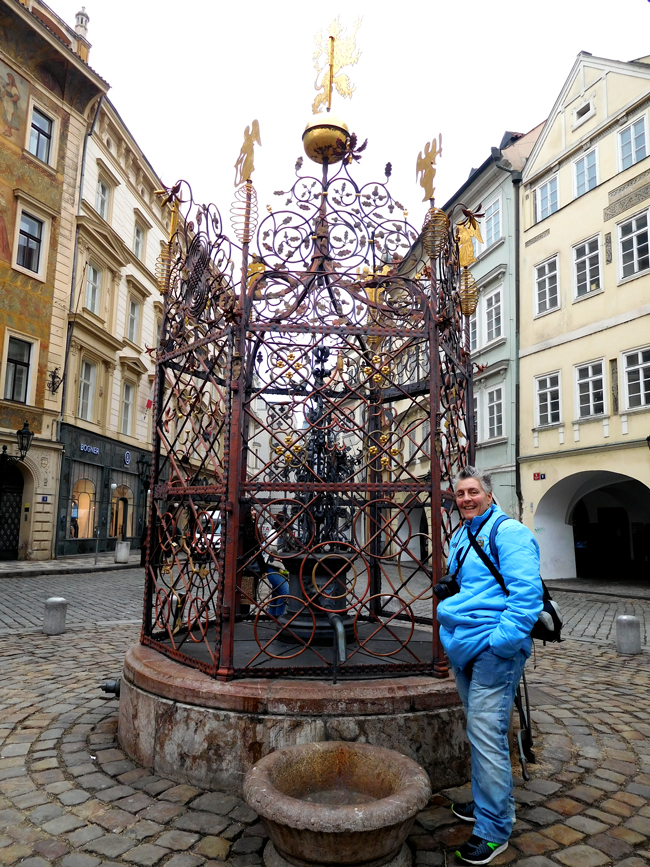
We started most days in the Old Town Square, bordered on all sides by characterful buildings, the Church of Our Lady Before Týn shoots up her Gothic towers opposite the Old Town Hall and tower which offers great views around the city and over the side to the astonishing, astounding, Astronomical Clock. Jan Hus stands tall on his monument surveying the many, many tourists and locals wandering through. While we were visiting at a quiet time of year, the food carts were busy, crowds gathered each hour under the clock and restaurants touted for business. I’m not a good one for crowds and if this was the quiet time of year, I can basically guarantee I wouldn’t want to try visiting in the height of summer. I’d probably end up hurting people.
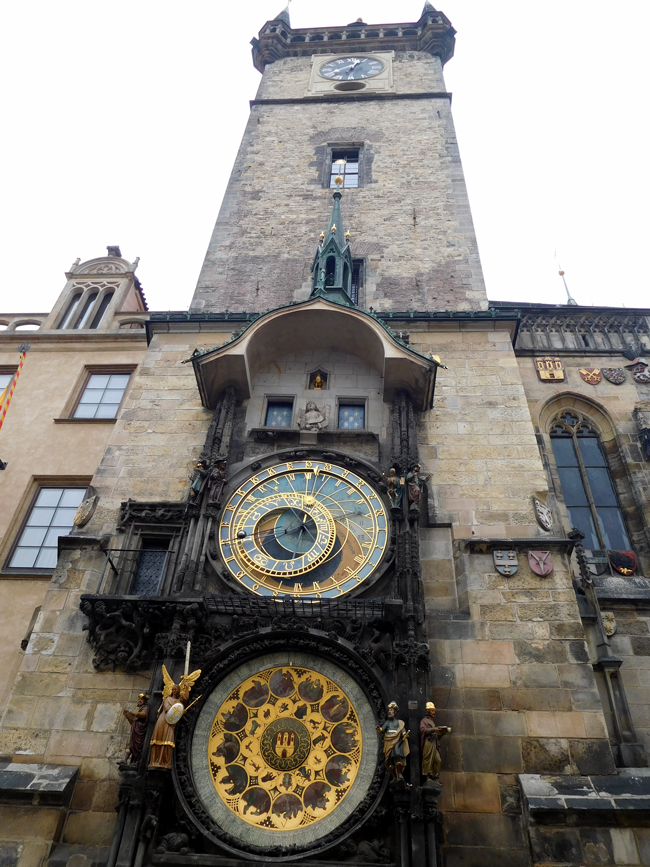


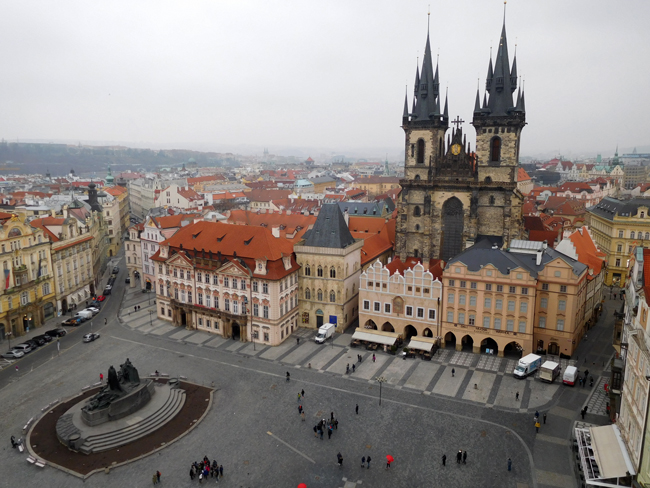

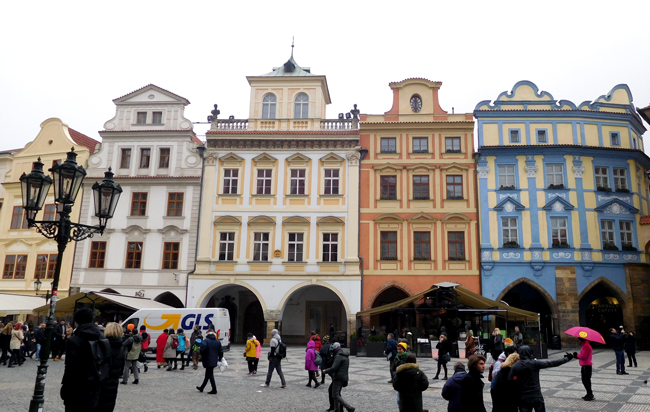
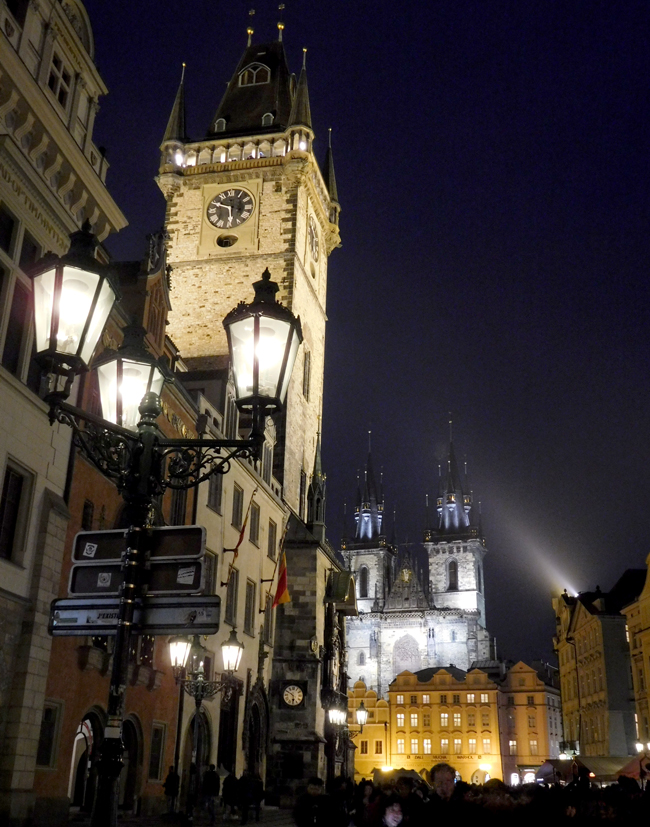
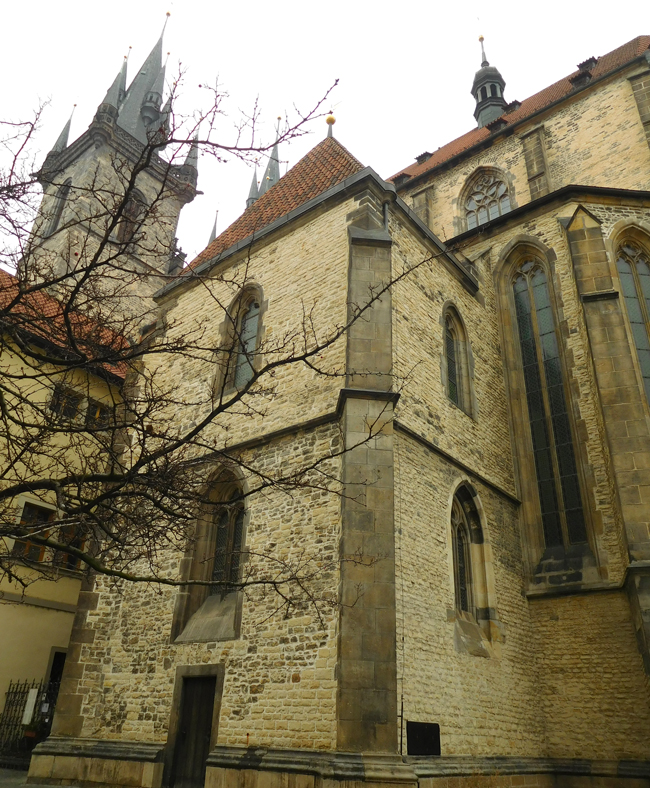
As we strolled through the square and into the alleyways, the throngs thickened and we were carried along on a wave heading for Charles Bridge. The souvenir shops blazed with light against the misty, dark grey pervading each wintry day, the delicious smell of the cinnamon trdelnik pastry cones cooking on their spindles beckoned each time we passed an outlet – we managed to limit ourselves to two during the whole week.
Charles Bridge is one of those iconic sights that sets Prague apart from everywhere else on Earth. Built between 1357 and 1402, the wide sandstone expanse over the Vltava River draws the crowds – us included each day of our visit – and offers multiple photo opportunities. The 30 statues of saints looming up from the sides mean you can’t simply walk across without stopping. Views sweep up to Prague Castle, the Hunger Wall and along the banks to numerous beautiful buildings like the National Theatre, synagogues and the Rudolfinum. This was one of those romantic and quintessentially European destinations I could only dream of visiting while growing up in faraway Australia. We made sure to run our hands over all the brighter areas of bronze, increasing our stores of good luck and chances of returning to Prague, thanks St John of Nepomuk!
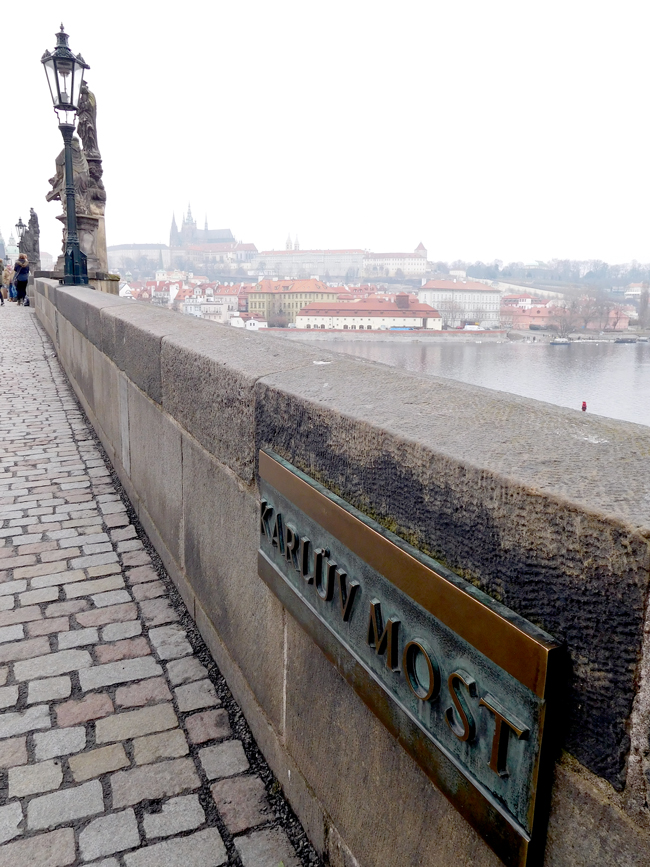
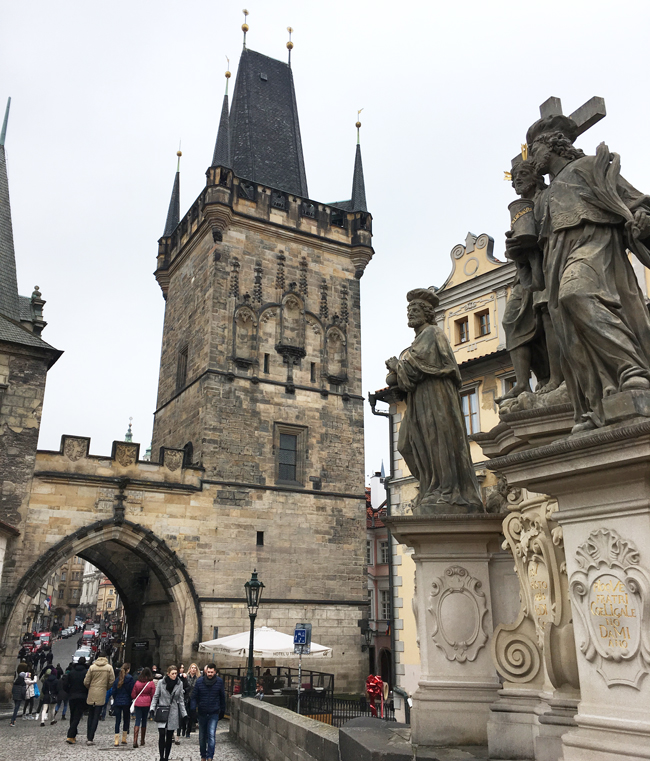
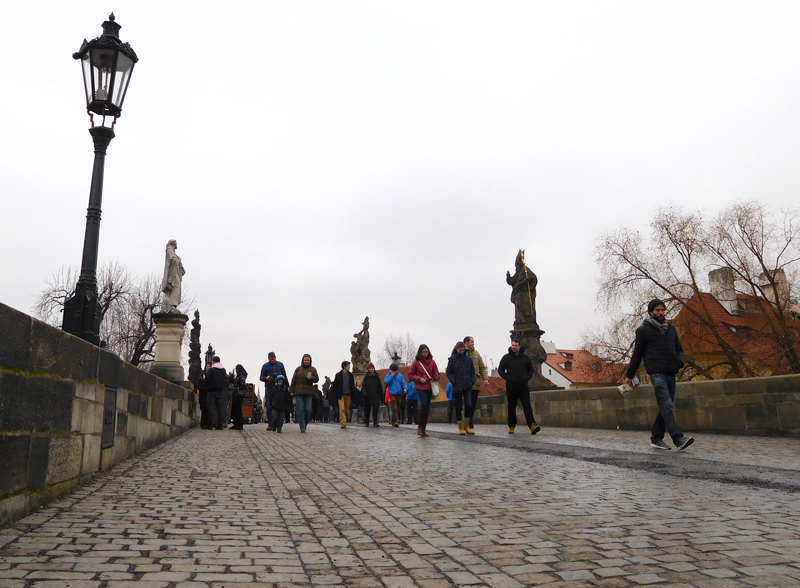
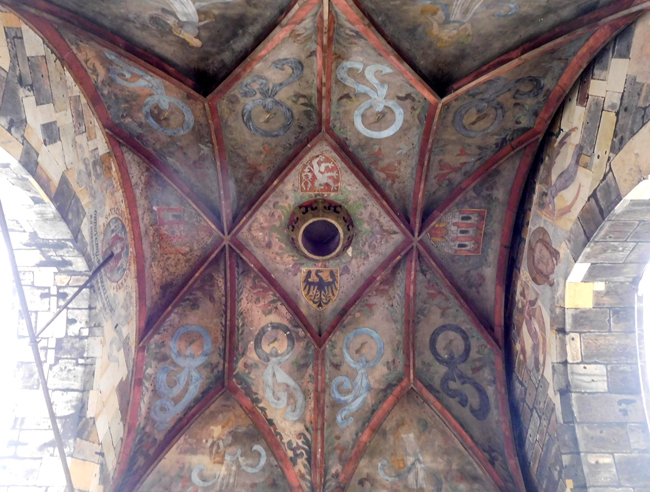
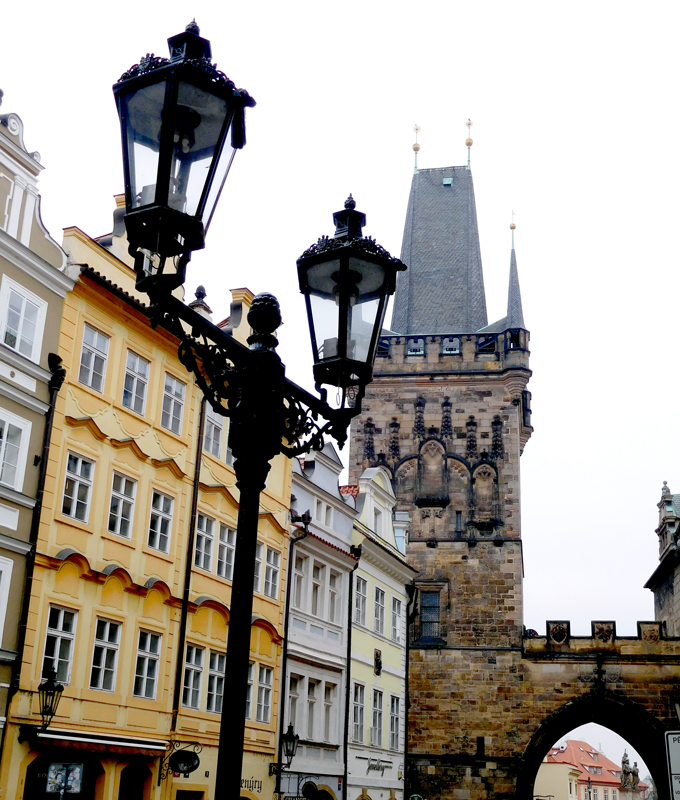

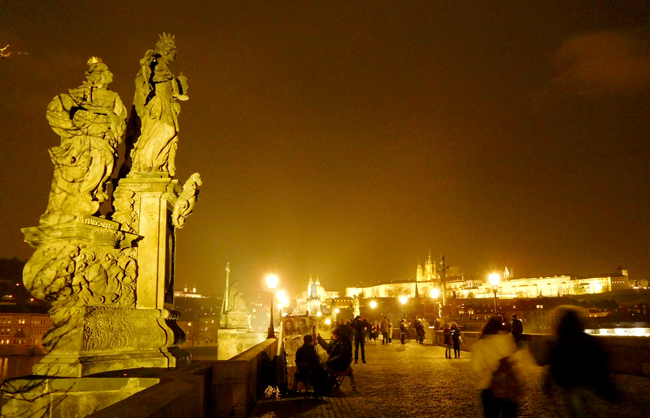
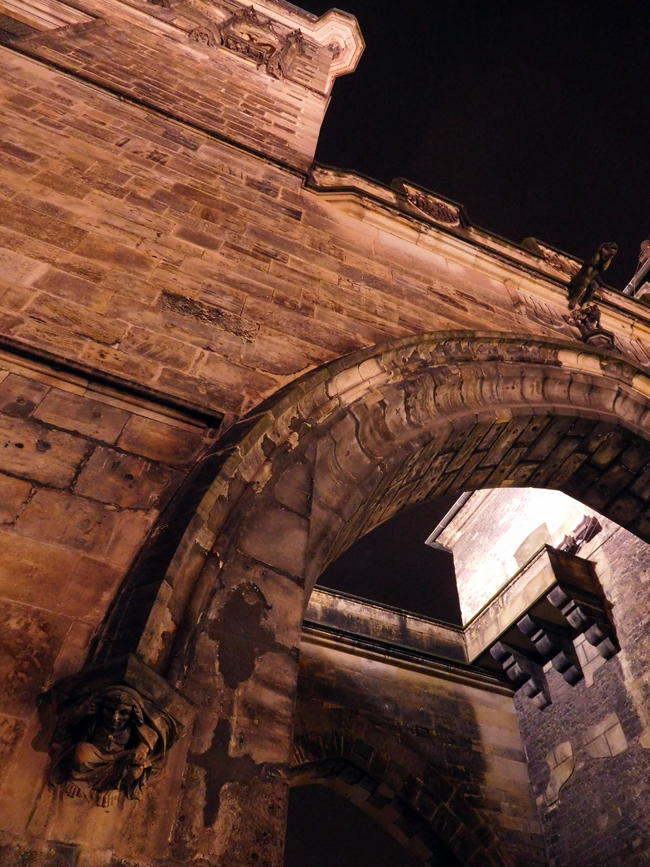
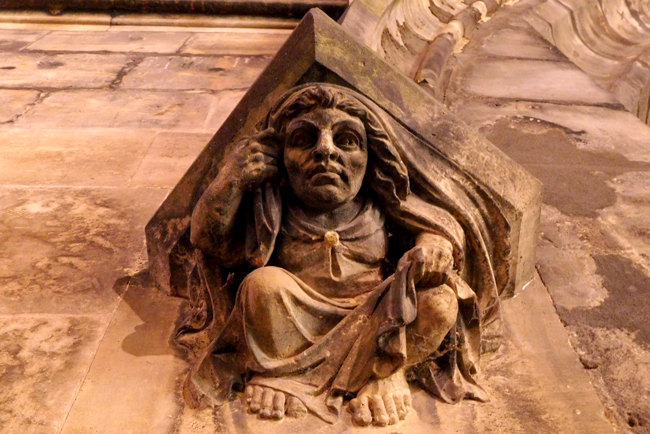
We racked up an average of between 16,000 and over 20,000 steps each day wandering around the city and across Charles Bridge. Into Lesser Town we climbed up the inclining streets towards the Castle complex as part of a walking tour that came free with our airport transfer. It was the coldest day of our visit but with the huffing and puffing of the climb meant I stripped off my beanie, scarf, gloves and big coat to cool down as we admired the misty view back towards Old Town. Prague Castle is a collection of buildings claiming the Guinness World Record for the largest ancient castle in the world with a footprint of 70,000 square metres. Construction started in the year 870 and was completed in 1929. If Guinness have a record listing for ‘longest overrunning project’, I’m sure it would win that too. The seat of power for the kings of Bohemia, holy Roman emperors and the presidents of Czechoslovakia, I couldn’t get the tune of the carol ‘Good King Wenceslas’ out of my head most of the time. His statue stands on Charles Bridge and his remains are buried in St Vitus Cathedral in Prague Castle. Unless of course the cardinal’s carrying his skull around on a pillow for a religious procession.
Before going through security and into the castle, we caught the changing of the guard. Smartly dressed guards in long coats and warm hats – which makes a change from camouflage – slowly march across the yard and take over from the retiring guards. It’s simple and at just the right moment our guide Ross gave us the code word to rush to the security check point and be first in the queue to get inside. And like good little guided tourists, we were front of the line.

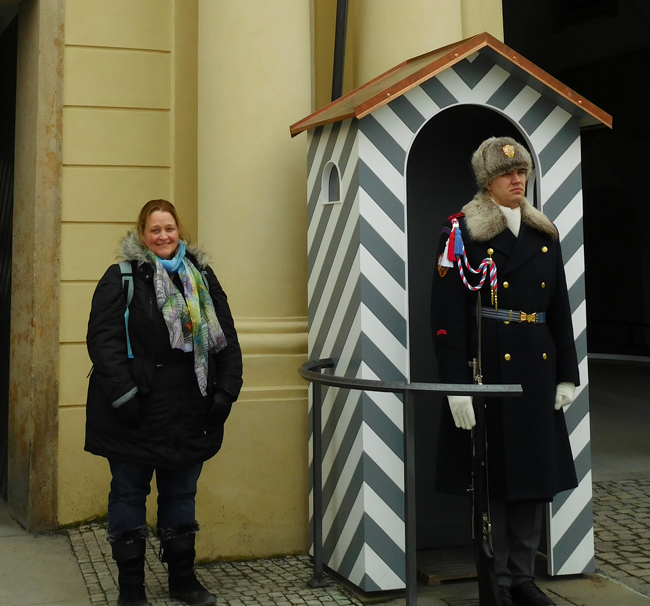
The castle complex was expansive and elegant, decorated in various architecture styles. The rush of walking through the overhead tunnel to be slapped in the face with the magnificent façade of St Vitus Cathedral doesn’t leave you quickly. It *really* stands out among the creamy straight lines of the surrounding buildings with its weathering stone, ornate sculpturing, soaring towers and bright glass. Inside could be anywhere in the world, if not for the unique stained glass design by my old mate, Alphonse Mucha in the gorgeous Art Nouveau style. Beautiful.
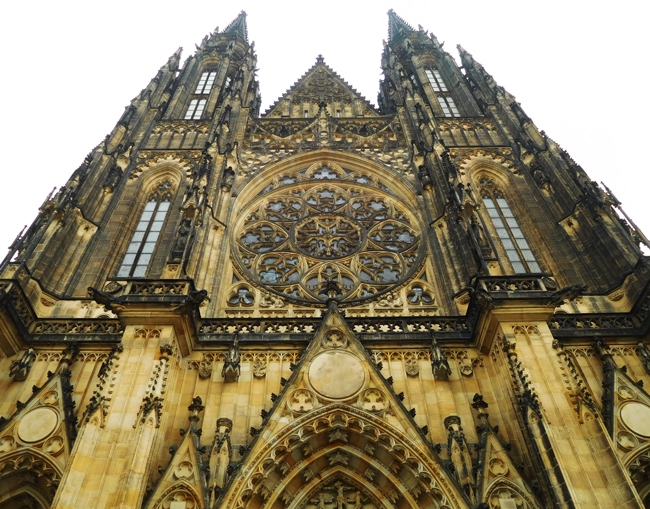
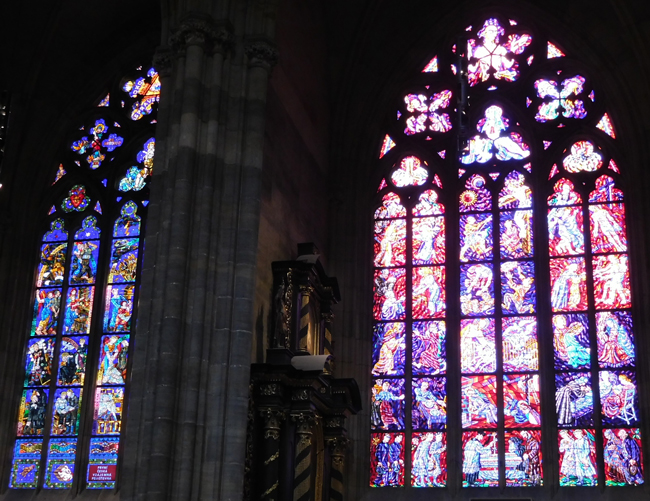


Back outside the decoration on the side is amazingly intricate with mosaics in gold and rich colours. The Cathedral dominates the courtyard around it which opens out to a peaceful space despite the throngs of milling tourists. There would be worse places to while away some hours people-watching if it wasn’t so cold. We retreated indoors to the on-site post office to finish the tour with Ross who clearly enjoyed displaying his passion for his gorgeous and historic city.
The walk back into the city centre took us past the Golden Mile and more churches before offering up wide open views over the city and bridges from between the classic block-style castle wall-tops, without which no fairytale is complete.

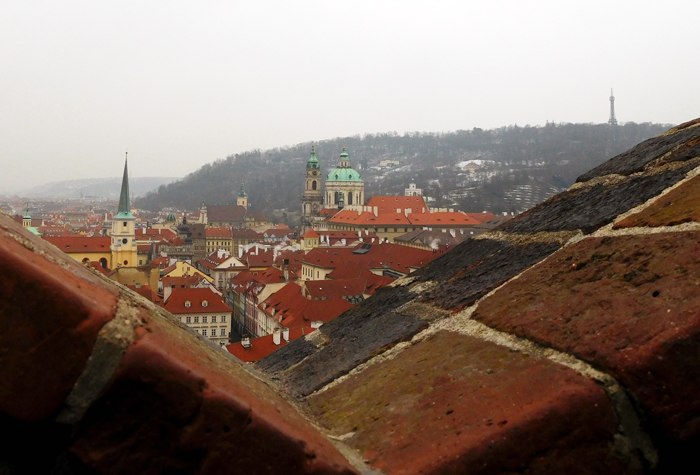

As happens when you go aimlessly walking, you can take detours and follow small side streets off the map…and then struggle to find your way back. At least in a city overflowing with sights and highlights, there’s something to catch your eye while you’re trying to imprint road sign names into your brain to then find on the map…and as a native language non-speaker, good luck recalling a street name in the nanoseconds between reading the sign and glancing at your map. There may or may not have been a few instances of turning a corner and finding ourselves back in a spot we’d left several streets ago thinking we were boldly forging our own path away from the tourists. At least we were never lost for long.
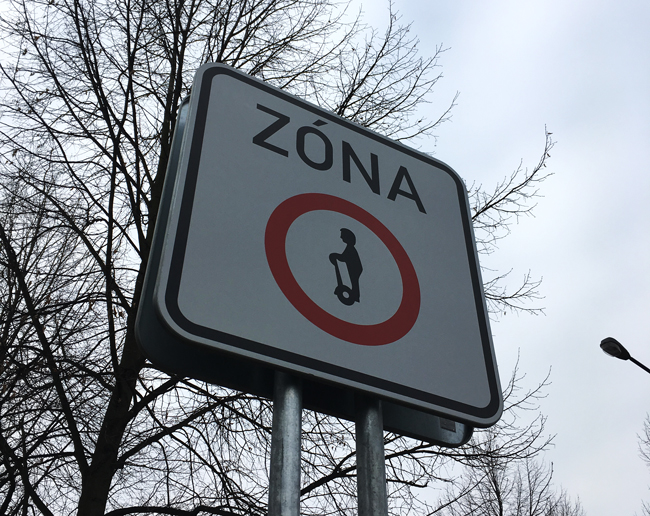
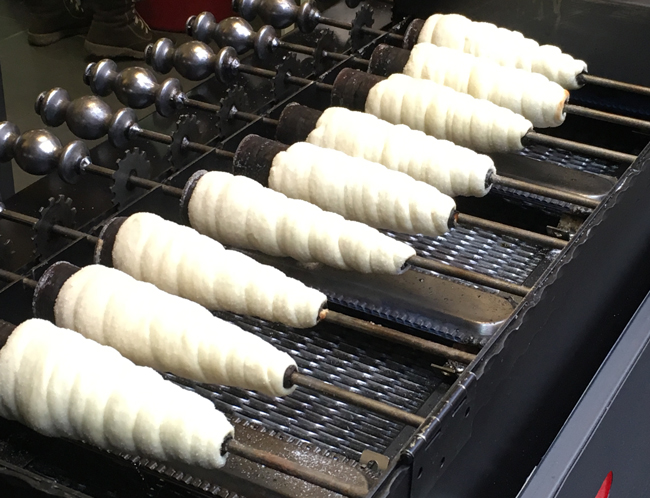


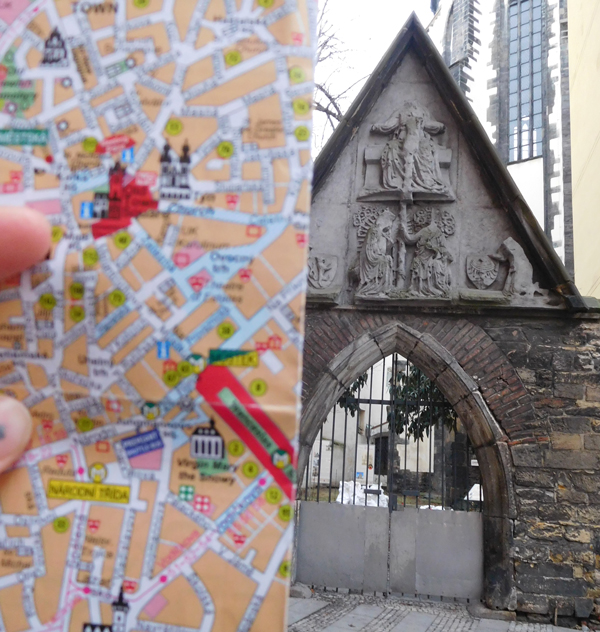
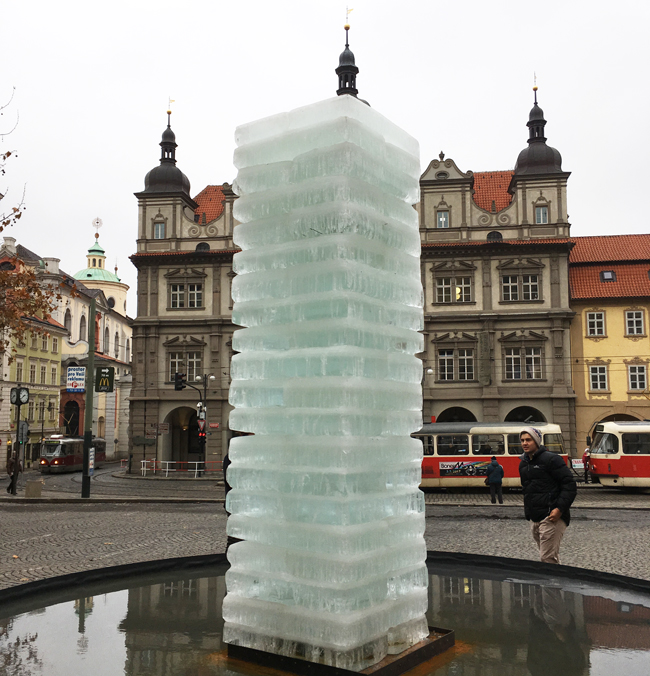
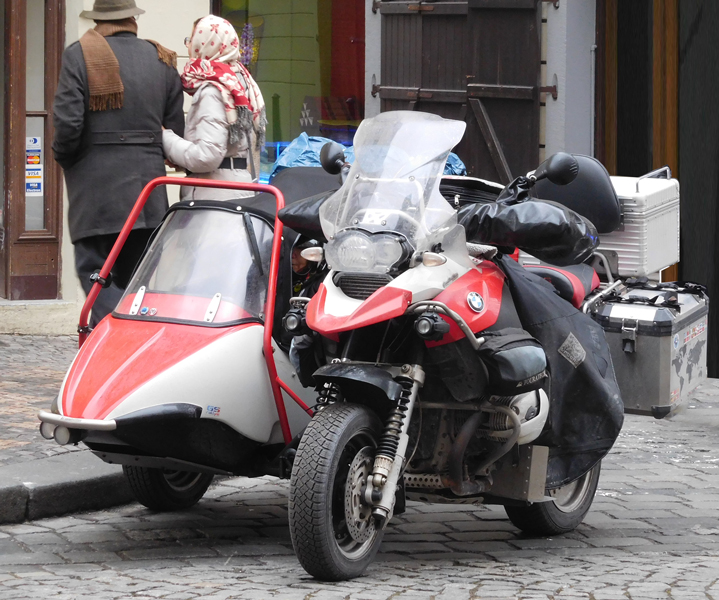
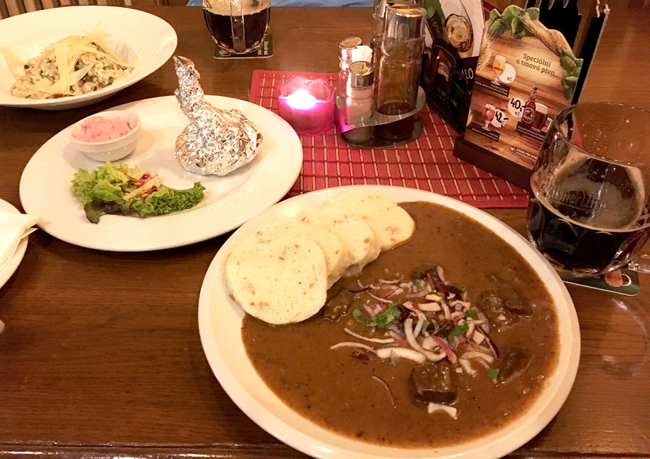
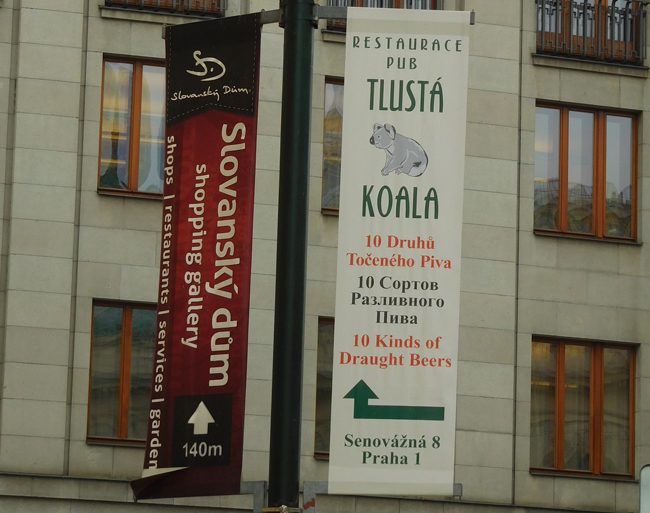



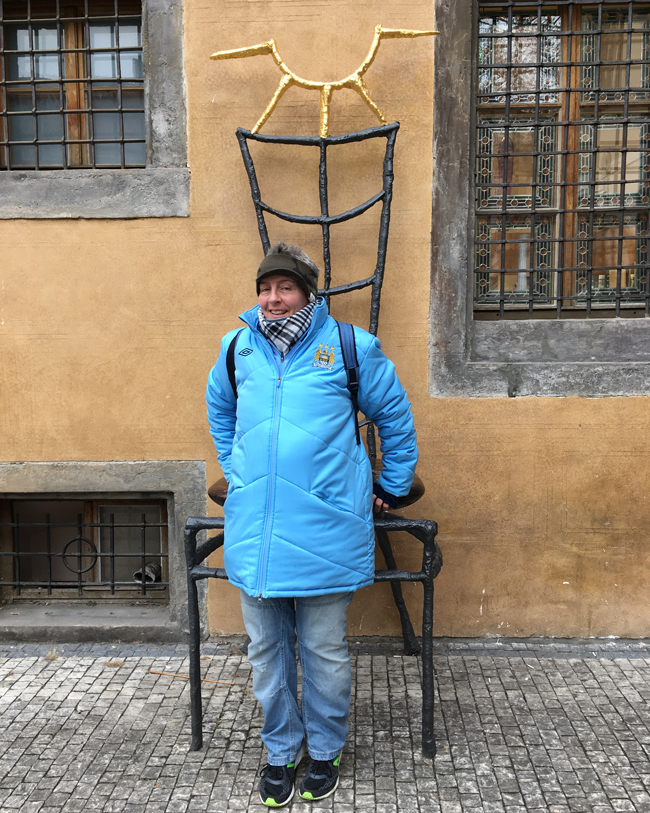

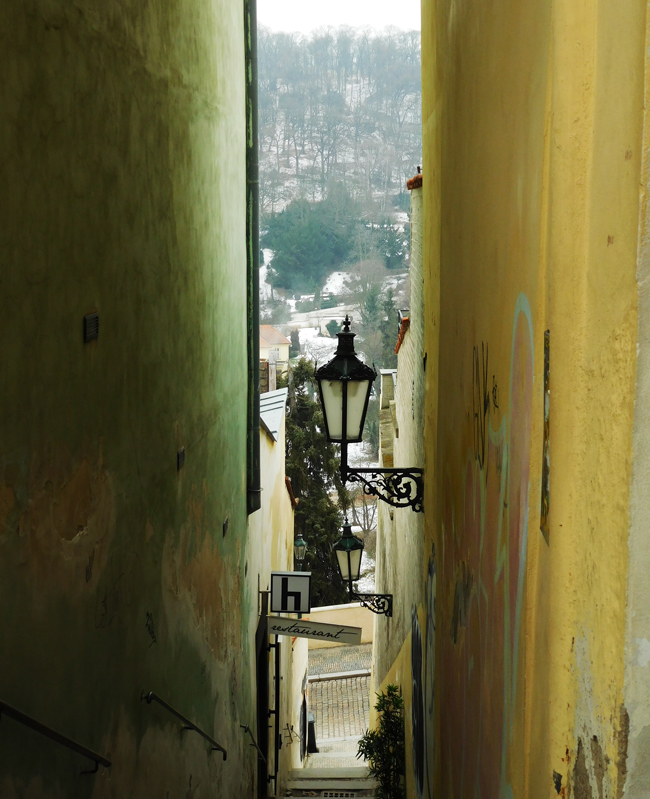
Kutna Hora
Handing the guide reins over to a lovely lady called Andrea, we joined Sandemans New Europe for a day trip to uncover Kutna Hora’s historic gems. Fields of dirt and winter snow unfolded before us for the drive once we made it past the city limits, a consistent grey and white monochrome theme that Lara Croft would happily use for a clothing range.
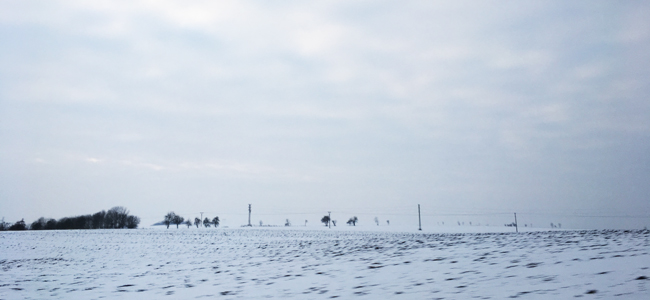
Our first stop in Sedlec was at the snappily named “The Cathedral of the Assumption of Our Lady and Saint John the Baptist”. The oldest Cistercian cathedral in Bohemia, it dates back to the middle of the 12th century and has certainly seen some history with war, plague, destruction, abandonment and eventually restoration crowding its long history. Its simple and elegant interior is dominated by soaring high walls in a creamy pastel yellow which do nothing to warm you against the cold air. Also on the site is the only manufacturing plant of tobacco giant Phillips Morris in the Czech Republic. They’ve sunk millions into the cathedral’s restoration so get to live on-site. Talk about buying absolution for your sins…

‘Ossuary’ is a term I was unfamiliar with prior to moving to Europe three years ago, since then I’ve visited two. I promise it’s not the main aim of my travels.
The Sedlec Ossuary, a Roman Catholic chapel located beneath the Cemetery Church of All Saints is an arresting sight even before you walk through the front door. Excavations were taking place right on the door step with several skeletons slowly revealing themselves as the dark earth is removed. Way back in the 13th century the abbot brought back soil from Golgotha and sprinkled it over the cemetery, thus creating quite the demand for locals to be buried there. Once they’d died of course, I’m not talking about ritual sacrifice. Obviously. Throw in a population-decimating bout of the black plague and several years of medieval wars and suddenly there’s no other course of action than to tell one of your monks – who just happens to be half-blind – to simply start stacking the thousands of bones. Today there are between 40,000-70,000 skeletons in what is a pretty small chapel, arranged by a woodcarver in the 1870’s into immense pyramids of skulls, a family coat-of-arms, massive chandelier, wall décor and on and on it goes. The current restoration project entails dismantling the four skull pyramids, doing some science on them and putting them back in the same spot…good luck! Artfully macabre and definitely memorable, I still managed to find peace in the hushed whispers, as much as you can when surrounded by fellow photo-snapping tourists. Back up and into the daylight it’s impossible to not take a deep breath of fresh air on purpose and remind yourself you’re in the minority in these grounds simply by being alive.
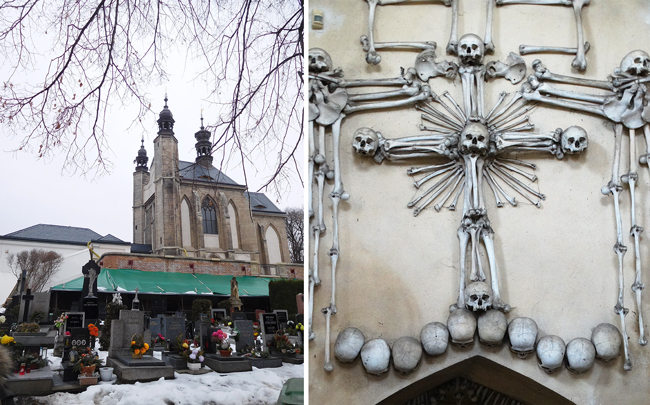
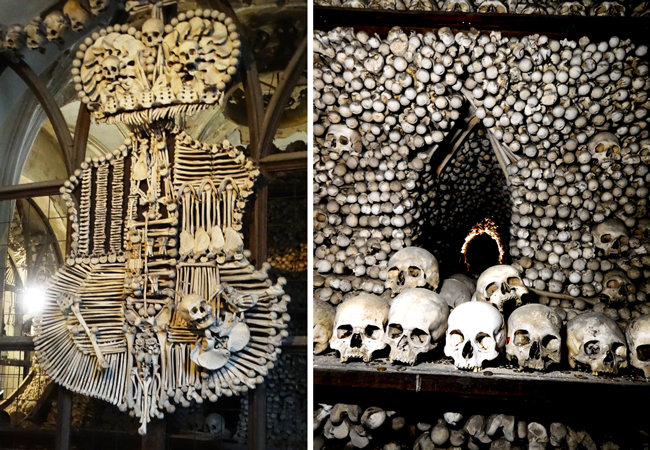
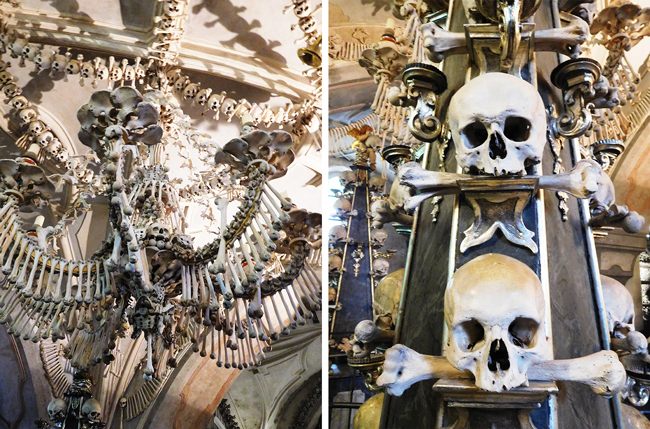
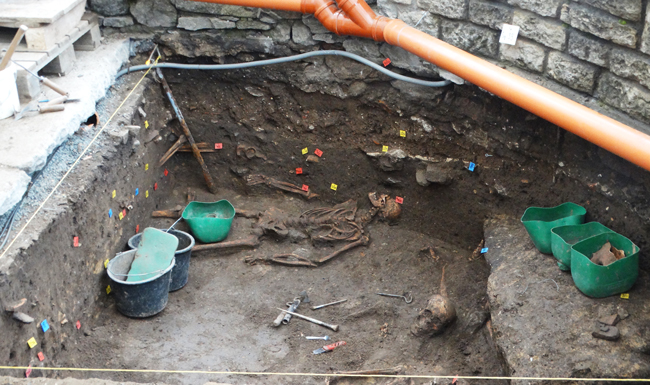
Being interested in history involves being interested in churches. For me, I can appreciate a church as a venue for the occurrence of historical events, for their attempts at beautiful architecture, and for their impressive longevity. I can appreciate a church while not appreciating religion. That’s just as well as we made our way to the immense St Barbara’s Church, dominating the large lawn with double-arched flying buttresses and a three-peaked roof. Construction began in 1388 and was completed in 1905, delays being caused by the fluctuating fortunes of the town’s famous silver mines and that pesky matter of warfare. St Barbara is the patron saint of miners so it makes complete sense she gets the biggest church in town. We skittered on slick ice and crunched snow to make our way around the outside, checking out the gargoyles and icicles staring down dangerously from them. Entering through the tall arched doors the calm interior felt even colder than the winterscaped outside and our breath puffed out in misty clouds as we pulled our jackets on tighter. Andrea explained the side chapels and brought us to a large wall with very old frescos detailing the typical life of the miners and minters, inexplicably interwoven in the town’s history with silver. What daylight was available was funnelled down through long stained glass windows and reflected off the light walls of the naves. Such a church would never be built in such a town in modern times, however it is proportionate to the importance of Kutna Hora in centuries past and the legacy continues to bring tourism and life to the local economy now the silver is all gone.
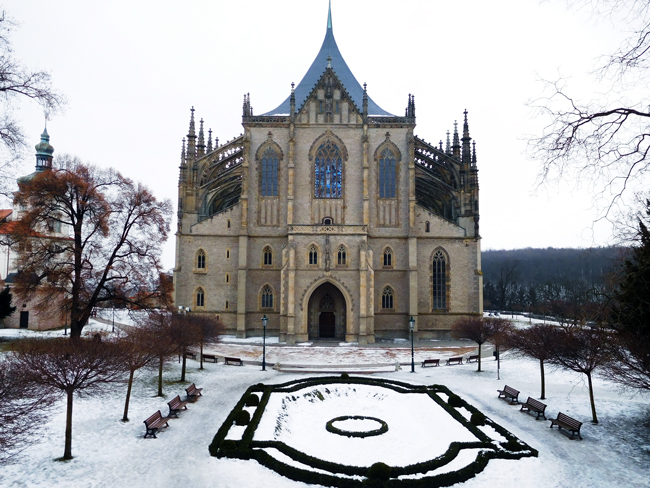
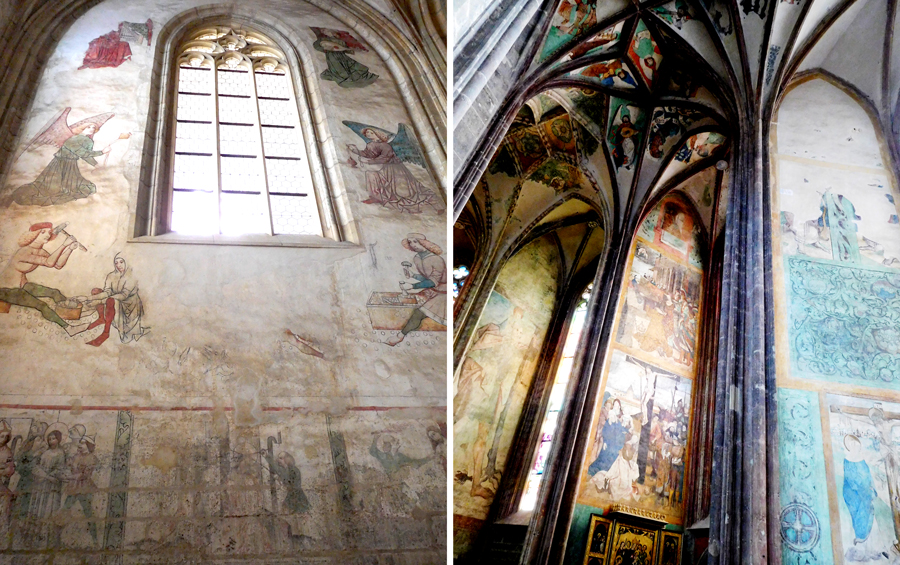
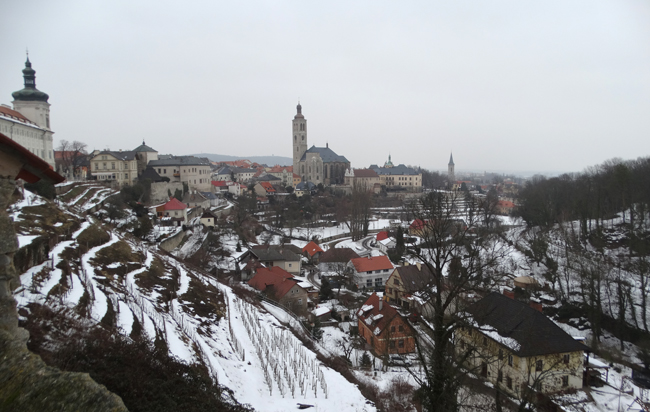
Adding meat to the historical bones of Kutna Hora, we walked alongside the Jesuit College next door to St Barbara’s Church, inspecting the statues sitting atop the stone rail that stops you falling down the vineyard on the hillside – of course it was on a hilltop…all good churches are after all.
Further down the cobblestone alleys of the old town we arrived at the Italian Court and former Royal Mint. Kutná Hora produced a third of Europe’s silver, and created the ‘Prague Groschen’ – the hard currency of Central Europe in the 1300’s. Despite being built towards the end of the 13th century and serving as a mint, royal residence, town hall, military hospital during the Napoleonic Wars and a boys elementary school, it is well preserved and a classically elegant style building, the inner courtyard offering peace and tranquillity from the outside bustle.
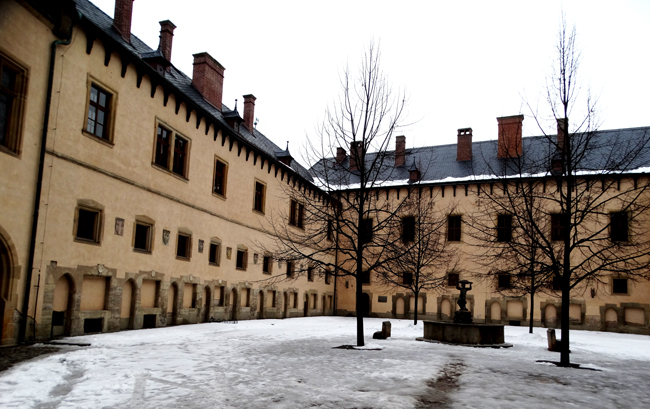


Completing the ‘authentic’ tour theme with lunch at the – quite frankly gorgeous – Restaurant Dačický entailed doing my best with rather a lot of roast duck breast, red cabbage and dense vegetable dumplings, washed down with a couple of steins of room-temperature Mikuláš dark lager. It was a very snoozy drive back to Prague before strolling back through the buzzing old town, beautifully lit in the warm glow of street lights.
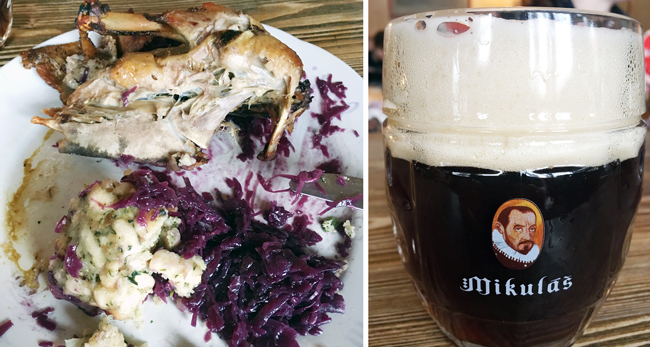
Prague is a very walkable city, my pedometer clocked up a range of 16,000 to 21,000 steps a day courtesy of our ambling jaunts over the cobbled roads. Venturing out of the centre we made for Letna Park across the river to the north of old town. The recycled beer bottle bird feeders (because the more classier beer brands came in plastic bottles) attracted colourful and too-quick-to-photograph birds grateful for an easy winter meal. We passed several joggers and other walkers and can imagine it’s a very popular place for locals during the summer when the kiosks would open and the playgrounds crawling with kids. The views over the city spread out below us, draped in the all-consuming grey. The temperamental metronome happened to be working, which is apparently a bonus. Wikipedia calls it ‘semi-functional’ – is that the polite way of saying it’s surprising to see it working? It was built in 1991 on the plinth left behind following the destruction of the Joseph Stalin monument in the 1960’s. The cost to kill off the Stalin monument with 800kg of dynamite was roughly the same as the cost to build it in the 1950’s. I had expected to hear the loud whirring of machinery while it moved but was surprised by how quiet and calm the area is.
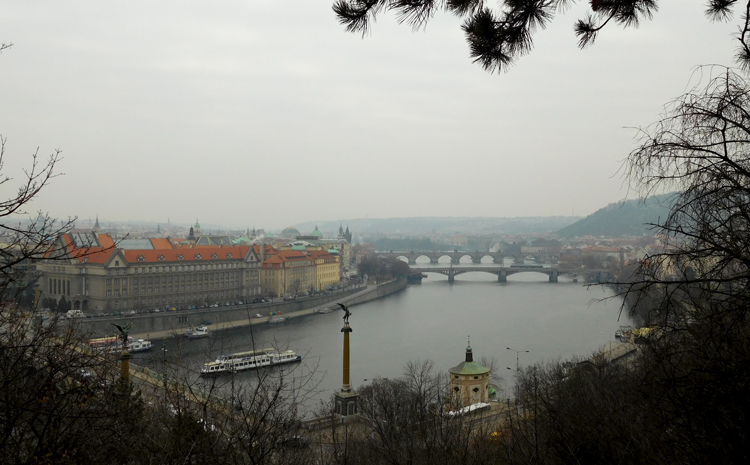
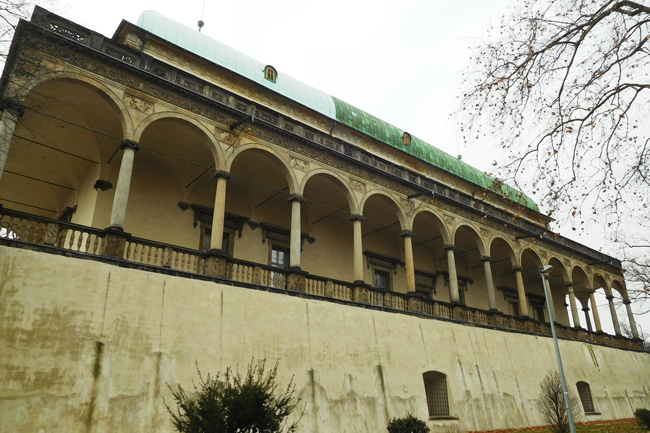
Continuing on we made it to the outside of the Summer Palace, with views reaching across the deer moat up to Prague Castle. The Palace wasn’t open and the patio with its unkempt colonnade took some imagination to visualise monarchs taking a walk for fresh air, still distanced from the public as the patio stands on a high stone wall. I am always fascinated by the relics of bygone eras that have been moulded by monarchies. For better or worse, their power and influence have changed the historical fabric of probably every country in the world, several more than their own backyards while they’re at it. Every culture it seems needs to elevate certain beings to a higher level of importance so they don’t have to be wholly responsible for their own actions – “The King made me do it!” Alongside religion, royalty has sculpted the everyday man to serve their interests, in return for praise and mercy. Imagine if we didn’t need that validation from the ‘popular kids’ everyday, how much we could do for ourselves instead? But I digress…
We wheeled our way through the castle complex for another look, and took a different exit, plodding up past a film set where we could see plenty of extras in wartime outfits having bain-marie lunches – and found out later Keira Knightley and Alexander Skarsgård were in town. Grand old buildings kept falling over themselves to impress us with their architecture and history, it was enough to make us stop for the single most expensive hot chocolate known to man. Just as well it needed a spoon as I couldn’t afford to leave any behind!

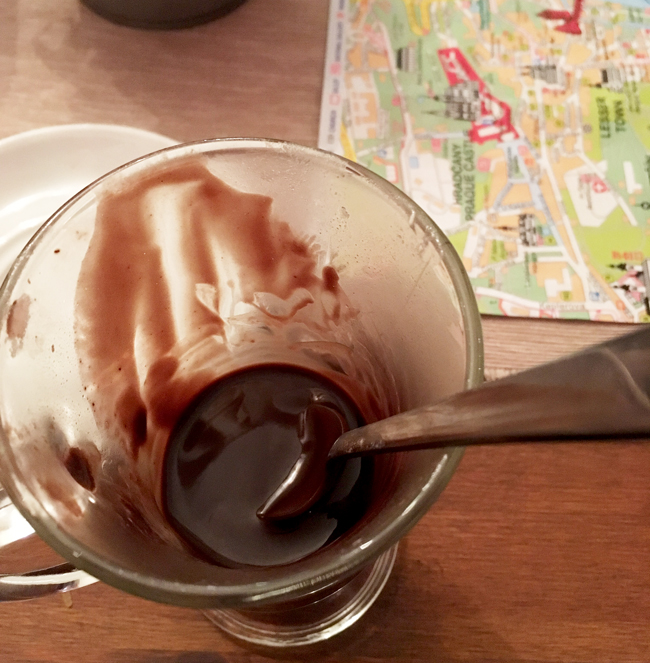
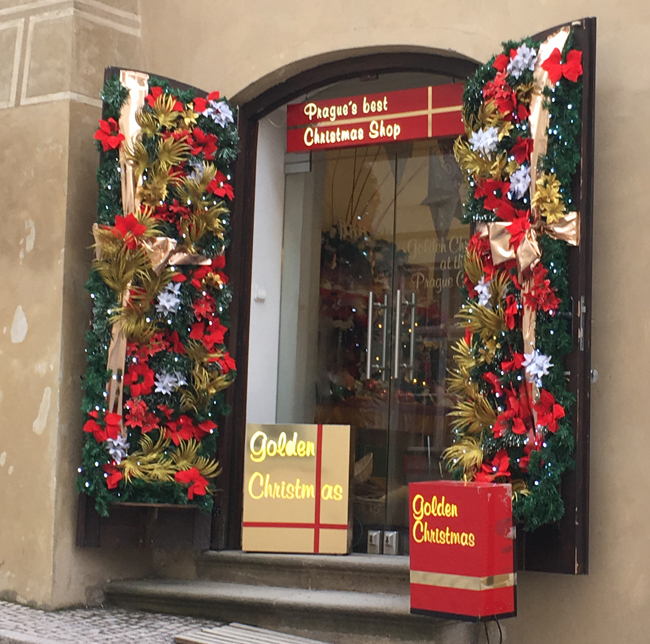
The Strahov Monastery library – it’s showpiece – was closed and since we weren’t ready for more beer yet (I know, strange right?), we kept walking around the grounds and up onto Petřín Hill, following the Hunger Wall as best one can when it’s nigh on impossible to keep your footing on the slick ice. Figuring we could claim we don’t speak Czech to read any ‘keep off the grass that’s hidden under snow’ signs, we veered off the footpath and crunched the ankle deep white carpet to make our own footprints and avoid coming a cropper. Given this is me we’re talking about and considering I can trip in bare feet, the fact we made it through remaining vertical is worth celebrating. Go me!
The Hunger Wall is so called because during its construction it provided a livelihood for the city’s poorer residents. It was built between 1360-1362 by order of Charles IV. It’s not strategic, but a useless public project, designed to keep the people fed. Just another reason they really do love Charles IV around Prague. The Wall runs along the top of Petrin Hill and down to the Vltava River. Also running from the hill to the water is a funicular originally built in the late 1880’s and a cheap, easy way to avoid tumbling down the hill when I would inevitably lose my balance on the snow.
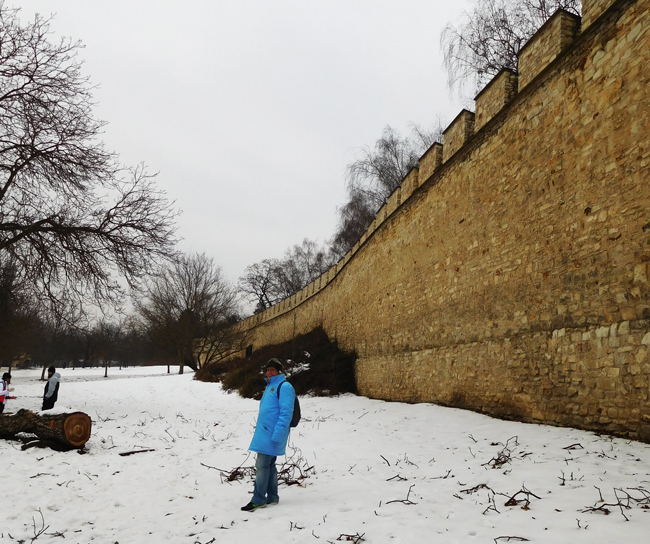
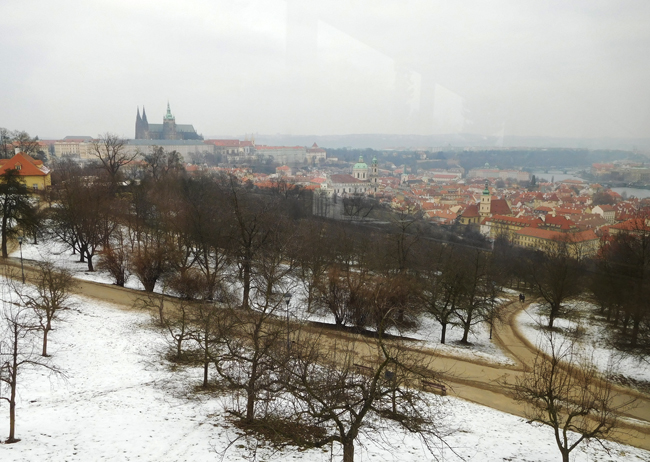

Strolling the esplanade bordering the Vltava once more we came to the Dancing House – for me it’s a gorgeous example of when architects are allowed an unlimited budget to make something unique. It’s a far cry from the nearby St Cyril and Methodius Church. The crypt under the church is where paratroopers involved in Operation Anthropoid went into hiding after their assassination of evil Nazi Reinhard Heydrich in 1942. Bullet holes remain and are joined by a plaque to commemorate the ‘martyrs’ who took their own lives as the end became obvious, rather than be taken prisoner by the Nazis. It was the only successful assassination of a top-level Nazi of the war so they are deserved heroes.
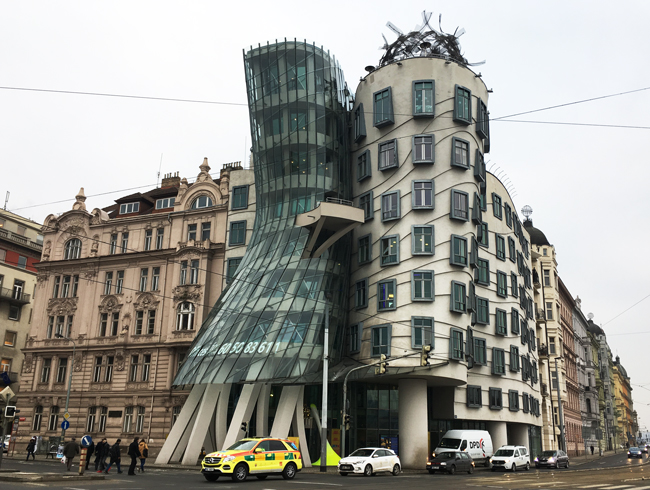
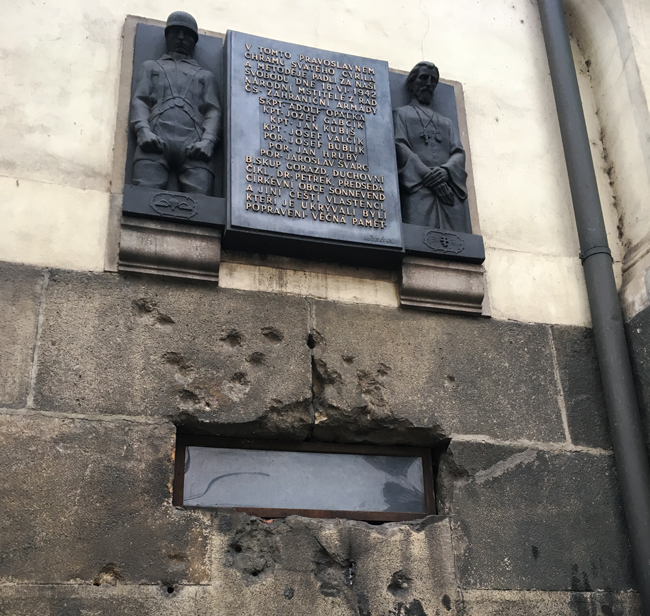
For all the grand history, impressive buildings and copious cultural sights, one of the best experiences in Prague was whiling away a few hours people-watching while eye-lever with King Wenceslaus astride an upside down dead horse. Yes, that is what I said. Prague native, artist David Černý’s piece ‘Kun’ dominates the marble atrium of the beautiful Art Nouveau Lucerna Arcade. The splendid Kavarna Lucerna café attached to the cinema sits on the upper level with large glass windows viewing the sculpture.
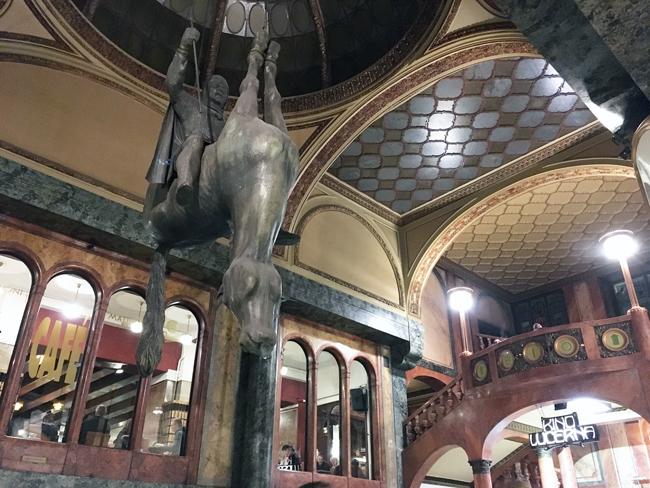
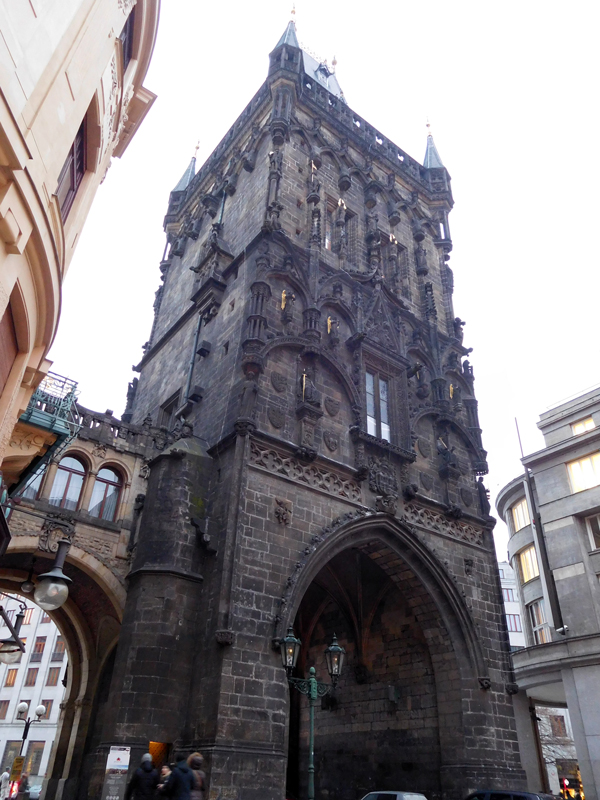
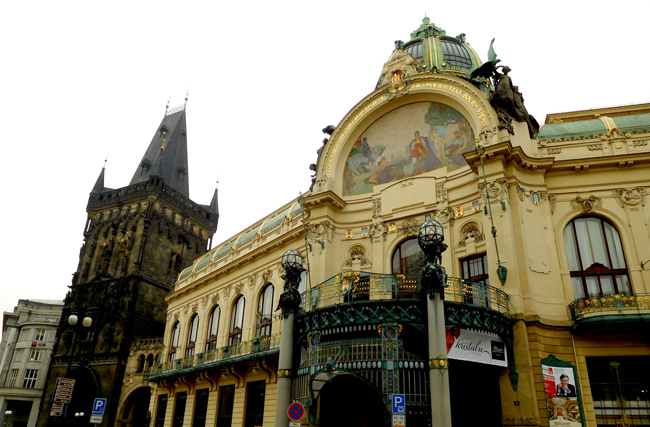

After a lot of walking, a couple of hours spent with some really good beers, snacks and the wonderful old charm staff and 1930’s décor, this was one of those moments when you realise life really is good, that travel can warm the heart in the smallest of ways and Prague is a destination you could appreciate again, and again, and again.